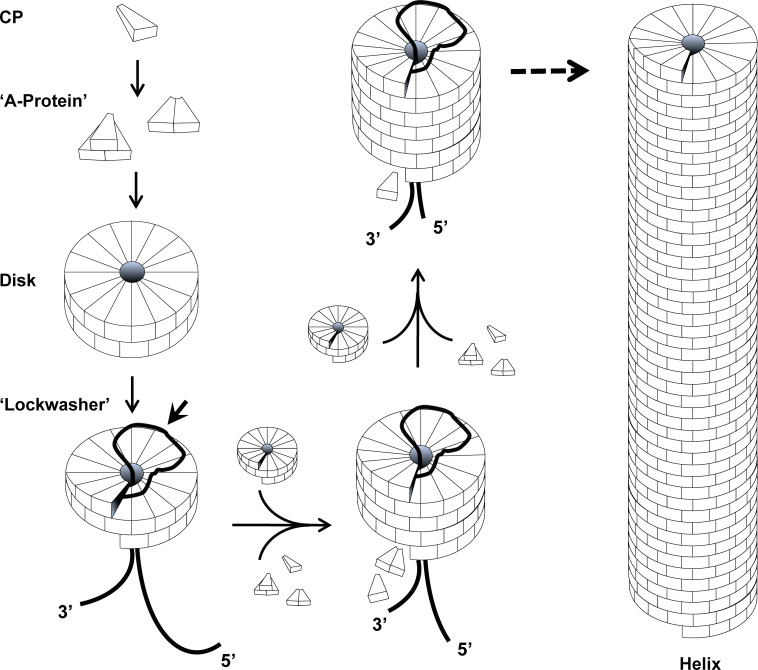Figure 2.
Self-assembly process of TMV. Model for the bidirectional self-assembly of nanotubular TMV particles, based on the formation and consumption of different CP oligomers, i.e. "A-protein" and disks, in vitro. RNA is shown as a black line. Assembly of TMV starts with insertion of the RNA origin of assembly (OAs)-loop into the central hole of a protein disk, resulting in its conformational change into a helical “lockwasher” and the formation of an RNA “traveling loop” (indicated with arrow) and integration of the adjacent RNA portion between the CP layers. Fast tube elongation towards the 5’-tail of RNA is achieved by the serial addition of protein disks, while slow 3'-elongation occurs through use of “A-protein”. Modified from [35].

